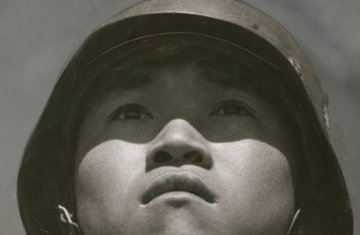
Hankou, China, 1938 A 15-year-old recruit in the Second Sino-Japanese War
"If your pictures aren't good enough, you're not close enough," Robert Capa once said. The Hungarian-born Endre Friedman (who rechristened himself the less ethnic-sounding Robert Capa to get more work) became a legend shooting five wars by getting closer to the action than most dared — including when he landed on Omaha Beach in Normandy with the first wave of U.S. soldiers on D-day. Now a new exhibit, "This Is War! Robert Capa at Work" at New York City's International Center of Photography, takes a unique look at his iconic images.
The show, which runs from Sept. 25 through Jan. 6, 2008, presents for the first time the full arc of his photojournalism, from contact sheets to notes written in the trenches. "This exhibit is different from a retrospective," says Cynthia Young, curator at ICP, which was founded by Capa's brother Cornell in 1974. "We're looking at six of his most famous works as a process, not just the end result." These include Hankou, China, 1938, and one of his more disturbing shots: the Falling Soldier, whom Capa snapped keeling backward at the instant of his death by gunfire during the Spanish Civil War. Shown with it are images taken immediately before and after that moment. Through Capa's eyes we see that, while the way we fight may have changed, war's truths remain the same. www.icp.org